There’s nothing quite like the vibrant presence of indoor plants to breathe life and color into your home. For both beginners taking their first steps into the world of plant care and seasoned gardeners looking to expand their indoor jungle, a splash of color can transform any space into a lively oasis. Indoor plants offer more than just aesthetic appeal; they purify the air, boost mood, and create a sense of tranquility in your home. With the right selection, even novices can enjoy the benefits of a thriving indoor garden.
In this article, you’ll discover twelve stunningly colorful indoor plants that are perfect for beginners. These plants are not only eye-catching but are also forgiving, requiring minimal maintenance to thrive. Whether you’re drawn to the fiery reds of a bromeliad or the lush purples of a prayer plant, you’ll find options that suit your style and space. We will guide you through the characteristics of each plant, along with practical tips to ensure success, so you can confidently cultivate your own vibrant indoor garden.
By the end of this journey, you’ll be equipped with the knowledge to select and care for plants that brighten your home and spirit. You’ll learn about the light, water, and soil preferences of each featured plant, helping you create an environment where they can flourish. Whether you’re starting with one plant or planning a colorful collection, this guide will make the process feel accessible and rewarding. So, let’s dive into the world of colorful indoor plants and bring a touch of nature’s artistry into your living space.
Introduction to Colorful Houseplants
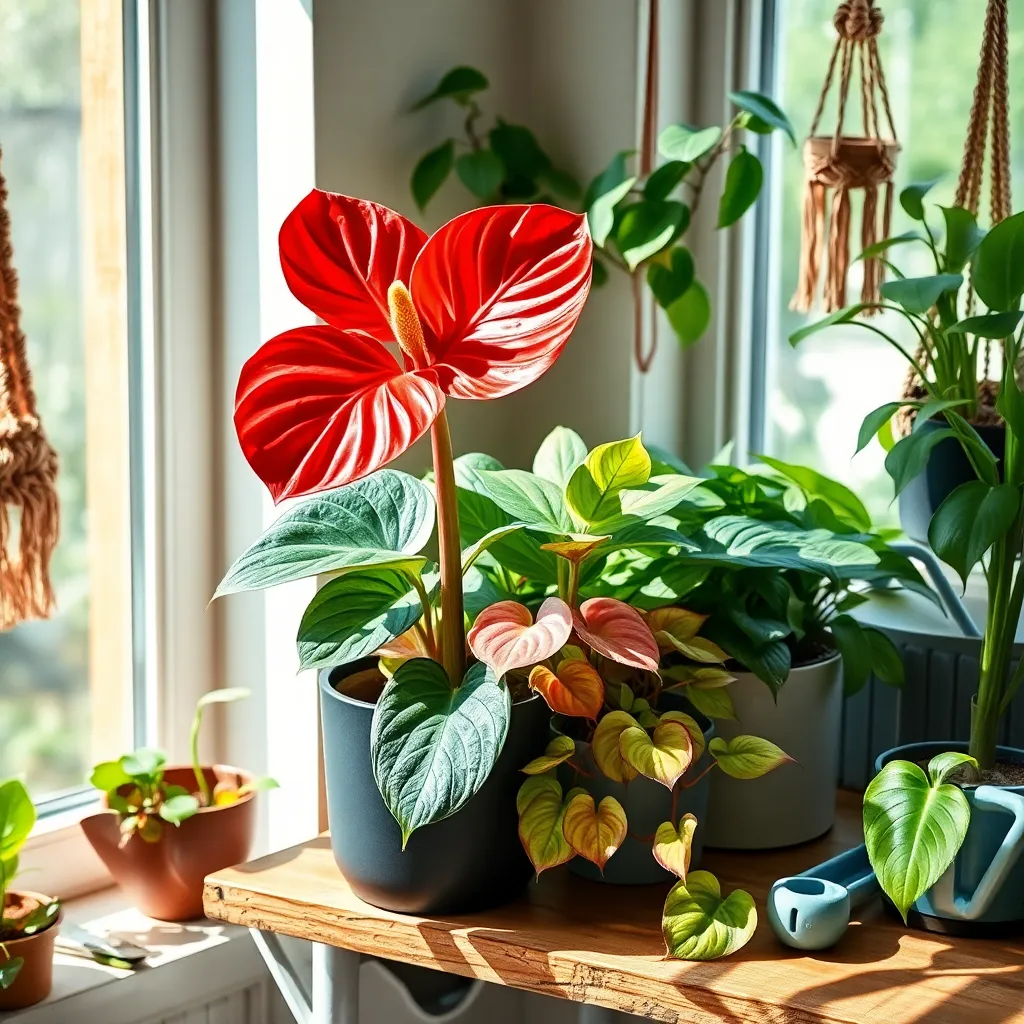
Colorful houseplants are an excellent way to brighten up any indoor space and they can be surprisingly easy to care for. For beginners, it’s essential to select plants that are both visually appealing and resilient to common indoor growing conditions.
Start by choosing plants that thrive in the light conditions available in your home. Most colorful houseplants prefer bright, indirect light, so placing them near a window with filtered sunlight is ideal.
One of the easiest ways to ensure success is by selecting plants that are known for their hardiness, such as the vibrant Spider Plant or the striking Pothos. These plants not only add color but also purify the air, making them a great choice for beginners.
Watering is crucial to maintaining the vibrancy of colorful houseplants. As a general rule, allow the top inch of soil to dry out between waterings to prevent root rot.
For those looking to dive deeper, consider experimenting with soil types to see which your plants prefer. A well-draining potting mix is often recommended, and adding perlite or sand can improve drainage.
Finally, don’t forget to occasionally rotate your plants to ensure even growth and color distribution. This simple step can help prevent one-sided growth and keep your plants looking lush and full.
Benefits of Indoor Plant Variety
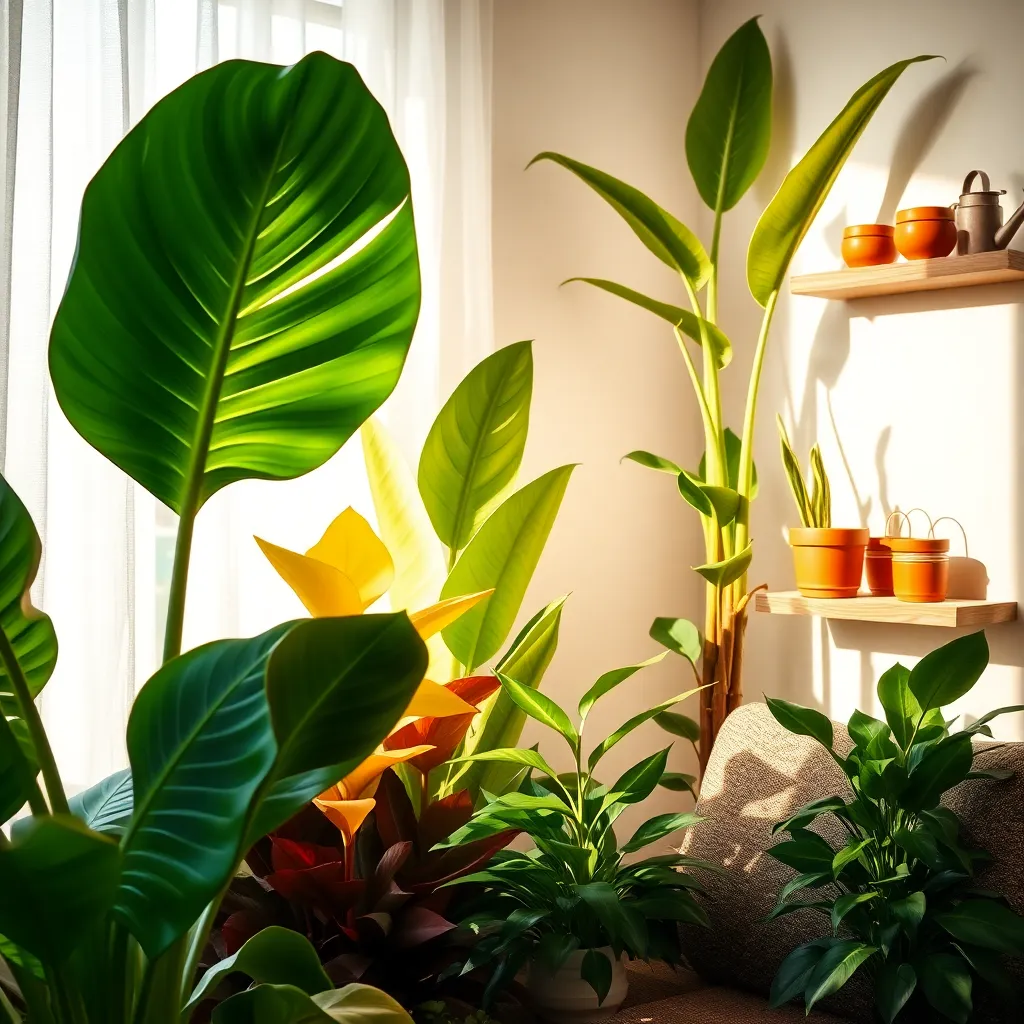
Having a diverse array of indoor plants can significantly enhance your living space by providing both aesthetic and health benefits. Different plants can thrive in various light conditions, allowing you to place them throughout your home for maximum enjoyment.
To start, consider mixing plants that require similar care to simplify your routine. For instance, grouping plants that thrive in indirect sunlight and prefer dry soil, such as succulents and snake plants, can make watering schedules more manageable.
Experimenting with a variety of plants can also help you learn about different care techniques, enriching your gardening skills. By observing how each type reacts to its environment, you’ll become adept at recognizing signs of overwatering, nutrient deficiencies, or pest issues.
For beginners, start by choosing a few low-maintenance plants like pothos or peace lilies, which are forgiving and adaptable. As you gain confidence, you can introduce more challenging species such as orchids, which require specific humidity and light levels for optimal growth.
Consider using a potting mix tailored for the plant type to ensure proper drainage and nutrient availability. For example, a well-draining cactus mix is ideal for succulents, while a nutrient-rich, moisture-retentive soil works better for tropical plants like ferns.
Regularly rotate your plants to ensure even growth and prevent one side from becoming leggy due to insufficient light. This simple technique also allows you to inspect each plant for any early signs of distress, ensuring they remain healthy and vibrant.
Choosing Beginner-Friendly Plants

When selecting plants as a beginner, it’s crucial to choose varieties that are easy to care for and forgiving if you make a mistake. Opt for plants that thrive in typical indoor conditions, like the snake plant or pothos, as they tolerate low light and infrequent watering.
Consider the plant’s light requirements to ensure it matches your home’s environment. Plants such as the ZZ plant can survive in low light, making them perfect for rooms with limited sunlight.
Watering is another important aspect of plant care to consider. Beginner-friendly plants like succulents or peace lilies require less frequent watering, making it easier to maintain them without overwatering.
To assist in plant selection, start with plants that have straightforward care instructions. For instance, spider plants are resilient and can adapt to various conditions, making them ideal for new gardeners.
Understanding your plants’ needs is key to their success. Use a general-purpose potting mix that holds moisture yet drains well, preventing issues like root rot.
For those looking to expand their care skills, try incorporating a fertilization routine. Use a balanced liquid fertilizer every 4-6 weeks during the growing season for most houseplants to promote vibrant growth.
Understanding Light Requirements
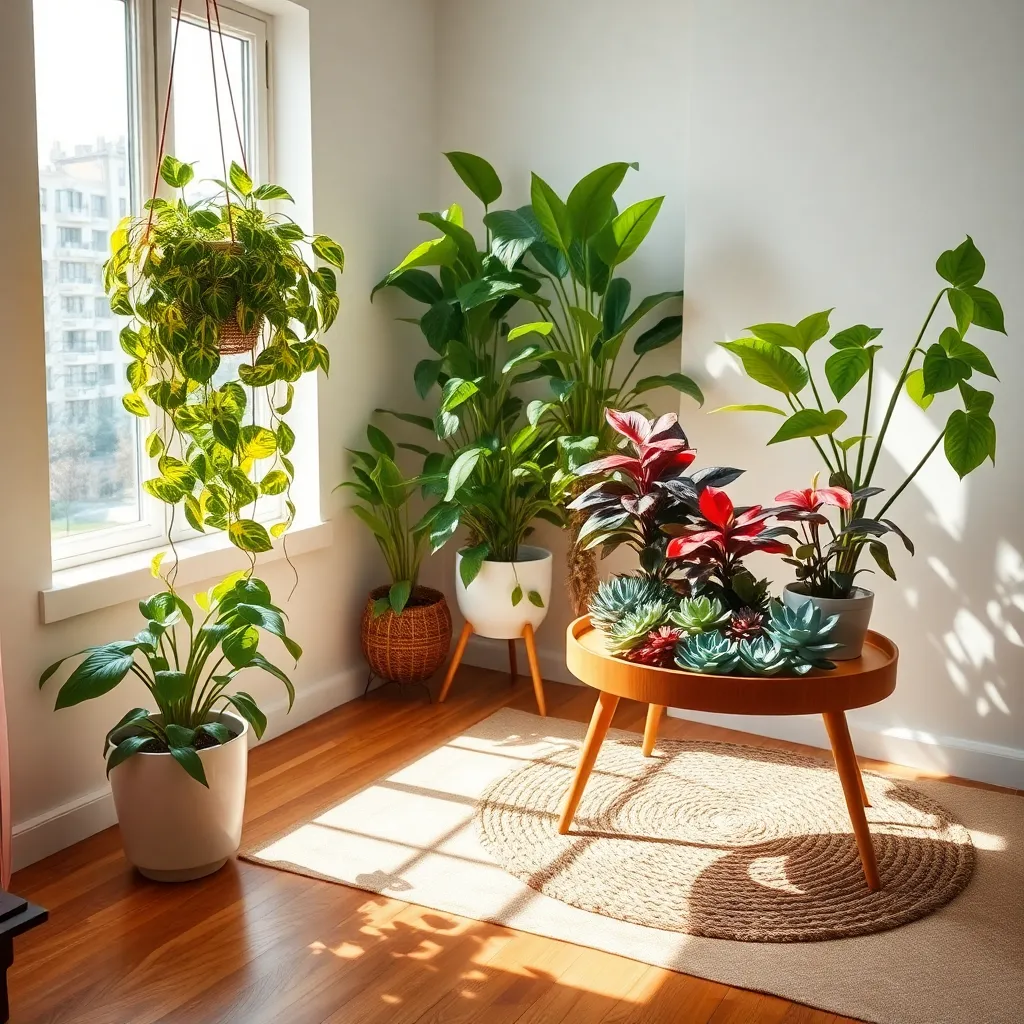
Understanding the light requirements of your indoor plants is crucial for their success and vibrancy. Most colorful indoor plants thrive in bright, indirect light, but the specific needs can vary significantly between species.
Start by assessing the natural light in your home, which can vary greatly depending on the direction your windows face. South-facing windows typically provide the most light, perfect for light-loving plants like succulents and cacti, while north-facing windows offer lower light levels suitable for ferns and pothos.
For beginners, it’s important to recognize the signs of incorrect lighting, such as yellowing leaves or leggy growth. Plants that receive too much direct sunlight can develop scorched leaves, while those in insufficient light may become pale and weak.
To optimize the light conditions, consider using sheer curtains to diffuse harsh sunlight or supplement with grow lights during shorter winter days. Rotating your plants every few weeks can also ensure even growth and prevent them from leaning towards the light source.
Advanced gardeners might experiment with light meters to measure the exact light levels their plants receive. This can be particularly useful in identifying microclimates within your home, allowing you to place each plant in its perfect spot.
Watering Tips for Indoor Plants
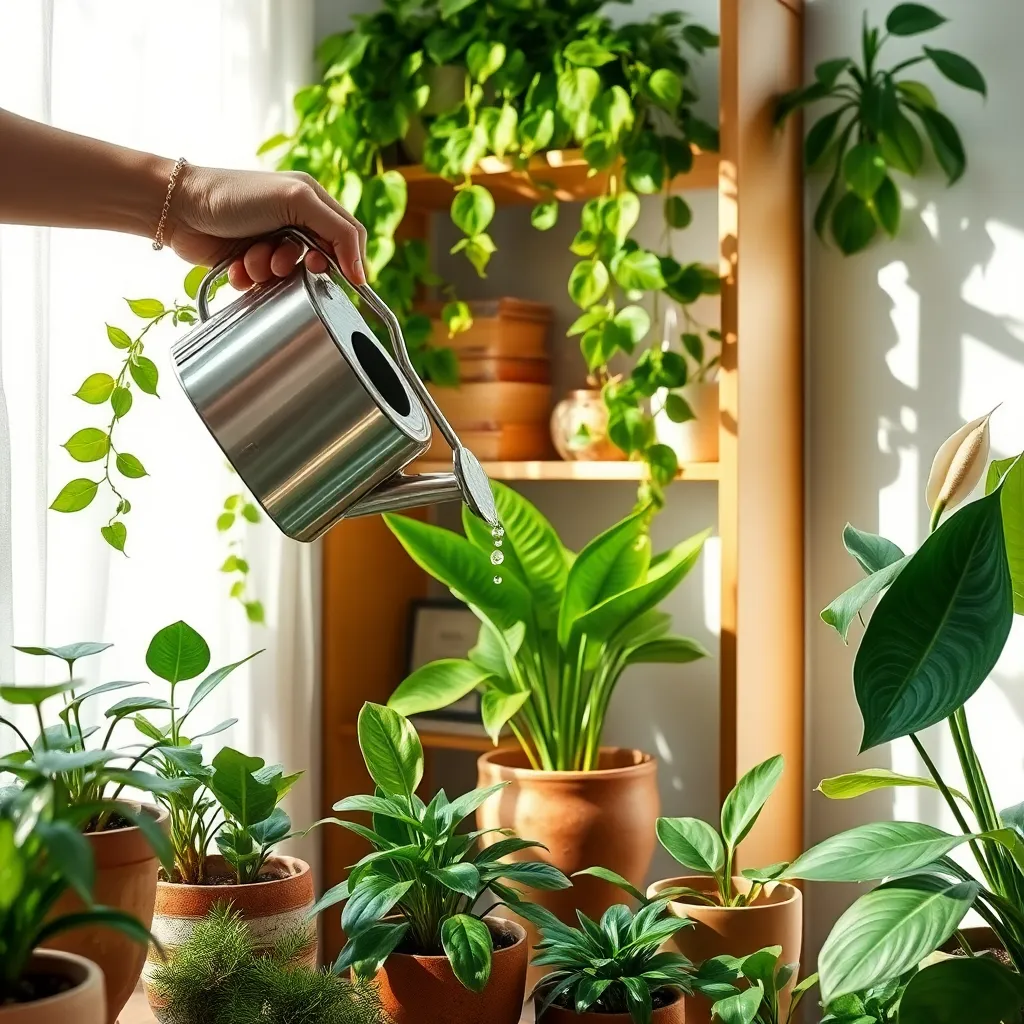
Ensuring your indoor plants thrive starts with understanding their watering needs. Overwatering is a common mistake, so it’s crucial to learn how to gauge moisture levels accurately.
To check if your plant needs water, insert your finger about an inch into the soil. If it feels dry, it’s time to water; if it’s moist, wait a few more days.
Use a watering can with a narrow spout for precision, helping avoid splashing water on leaves, which can lead to disease. It’s best to water at the base of the plant, ensuring the soil absorbs moisture evenly.
Consider the type of plant when determining watering frequency. Succulents, for example, require watering only when the soil is completely dry, while ferns may need more frequent watering due to their preference for consistently moist conditions.
Invest in a moisture meter for more advanced care, which provides accurate readings of soil moisture levels. This tool can be especially beneficial for beginners who are still learning to read their plants’ signals.
Proper drainage is vital to prevent waterlogging and root rot. Ensure pots have drainage holes, and use a well-draining potting mix, such as one containing perlite or orchid bark for better aeration.
Humidity plays a role in watering needs; homes with dry air may require more frequent checks. Grouping plants together can help maintain moisture levels, creating a microclimate that supports their hydration needs.
Soil and Potting Basics
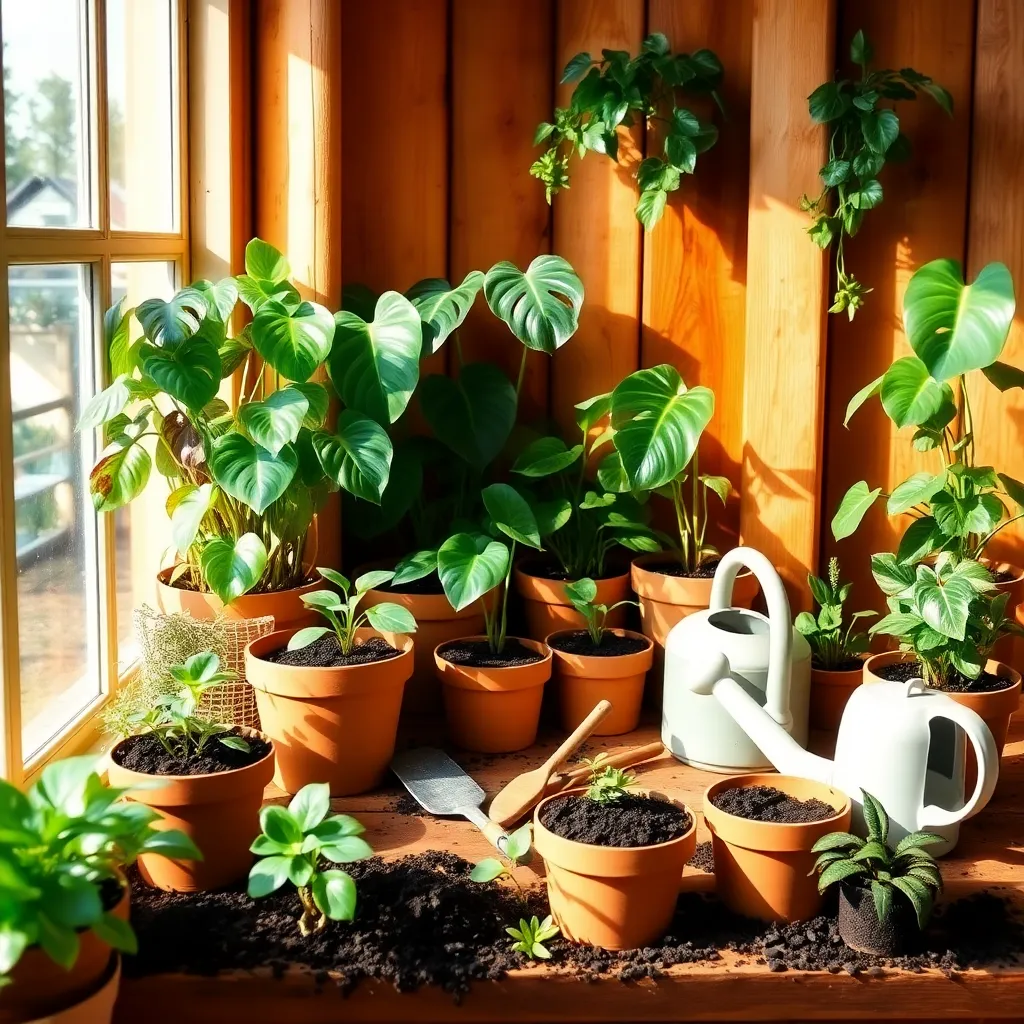
Understanding soil and potting basics is crucial for the success of your indoor plants. The right soil mix provides essential nutrients and maintains proper moisture levels, promoting healthy growth.
For most indoor plants, a general potting mix that includes peat moss, perlite, and vermiculite works well. This combination ensures good drainage while retaining enough moisture, which is key for plant health.
Beginners should start with a pre-mixed potting soil specifically designed for indoor plants, as it simplifies the process. Look for mixes labeled “all-purpose” or “indoor plant mix” at your local garden center to ensure compatibility with a wide range of plant types.
Advanced gardeners might consider customizing their soil mix based on specific plant needs. For instance, succulents and cacti thrive in a mix with more sand to enhance drainage, while tropical plants like Monstera prefer a mix richer in organic matter.
Choosing the right pot is just as important as selecting the right soil. Ensure your pots have drainage holes to prevent waterlogging, which can lead to root rot and other issues.
To ensure a healthy root environment, repot your plants every year or two, refreshing the soil and upgrading to a slightly larger pot if necessary. This process replenishes nutrients and gives roots the space they need to grow.
Temperature and Humidity Needs
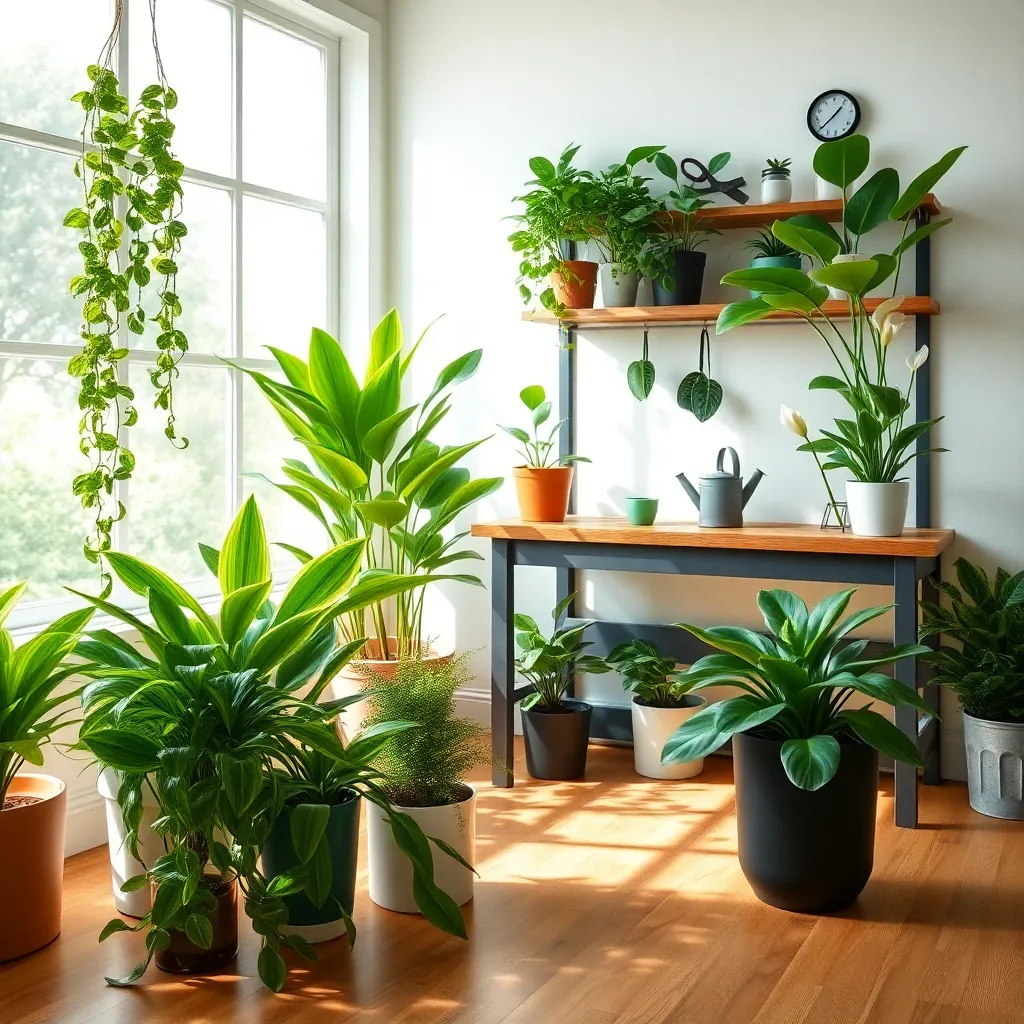
Understanding the temperature and humidity needs of your indoor plants is crucial for their health and vibrancy. Most beginner-friendly plants thrive in temperatures between 65°F and 75°F, making them perfect companions for most home environments.
Maintaining consistent temperature levels is key to avoiding stress on plants, which can lead to leaf drop or wilting. Avoid placing your plants near drafty windows or heat sources, as fluctuations can be detrimental to their growth.
Humidity plays a significant role in plant care, especially for tropical varieties. Aim for a humidity level of around 40% to 60% to keep your plants happy, using a humidifier or pebble tray if necessary.
For gardeners looking to be more precise, a digital thermometer and hygrometer can be invaluable tools. By monitoring these conditions, you can make subtle adjustments that will dramatically improve plant health.
In homes with particularly dry air, grouping plants together can create a microclimate that naturally boosts humidity levels. This is a simple yet effective strategy to ensure your plants receive the moisture they need without additional equipment.
Fertilizing for Vibrant Growth
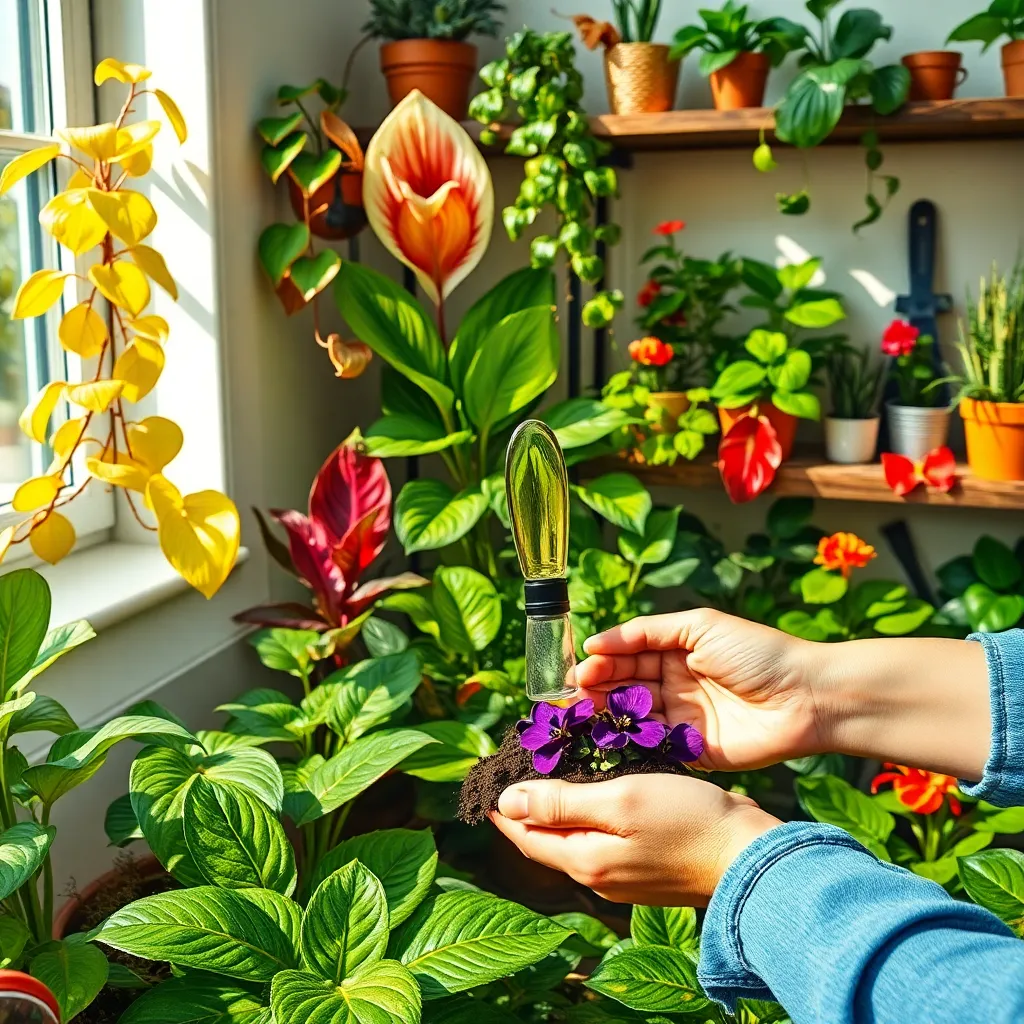
Fertilizing is essential for achieving vibrant growth in your indoor plants, providing them with the nutrients they need to thrive. Start by selecting a balanced, water-soluble fertilizer with an equal ratio of nitrogen, phosphorus, and potassium, such as a 10-10-10 formula, which supports overall plant health.
To ensure your plants are receiving the right amount of nutrients, fertilize during their active growing season, typically spring and summer. Apply fertilizer every two to four weeks, but remember to reduce the frequency in fall and winter when growth naturally slows down.
For beginners, it’s crucial to follow the instructions on the fertilizer package to avoid over-fertilizing, which can harm your plants. Advanced gardeners might consider incorporating organic options like compost tea or worm castings, which offer slow-release nutrients and improve soil structure.
When applying fertilizer, always water your plants beforehand to prevent root burn and ensure even nutrient distribution. Use a diluted solution to prevent over-fertilization, especially for delicate plants like ferns or orchids that are more sensitive to chemical buildup.
By understanding the specific nutrient needs of your plants, you can tailor your fertilizing approach for optimal results. Remember, healthy plants not only look more vibrant but also resist disease and pests more effectively, making your indoor garden a thriving, colorful oasis.
Best Practices for Plant Placement
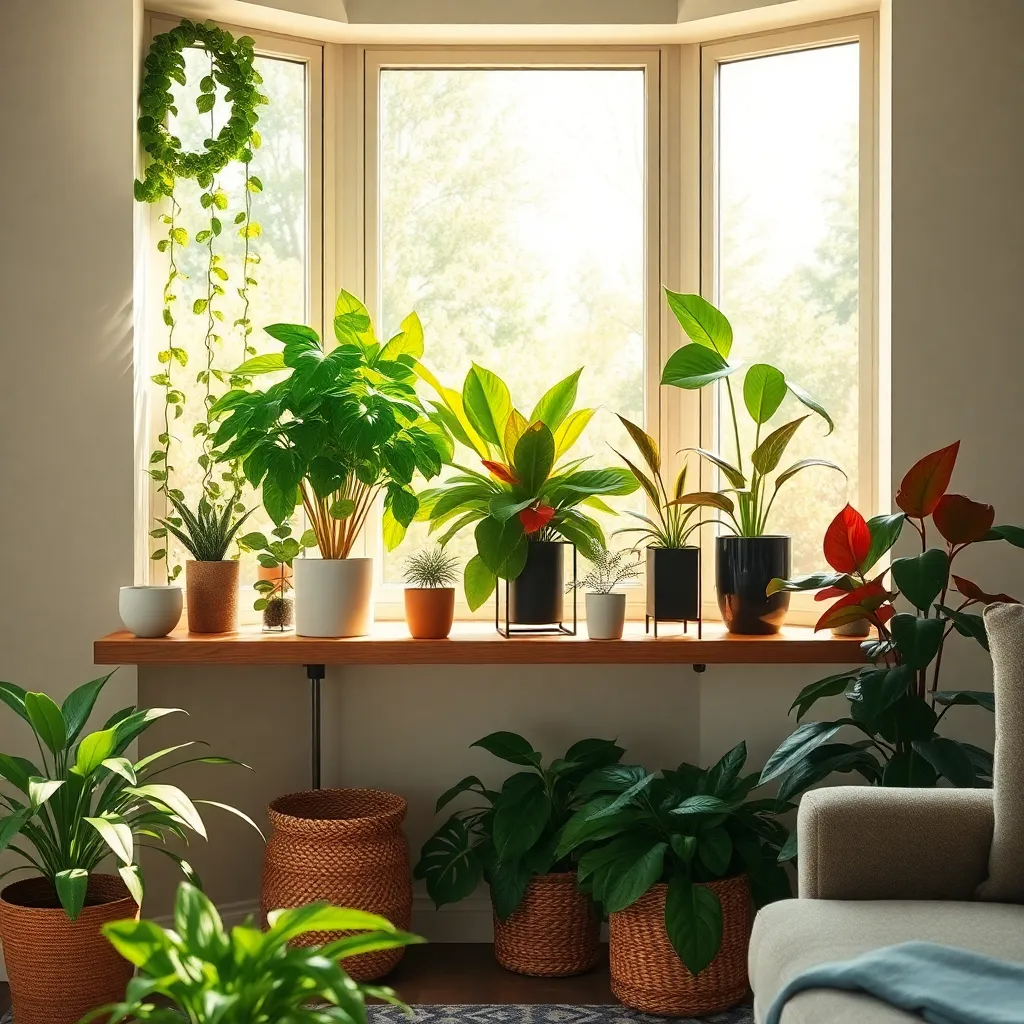
When placing your indoor plants, it’s essential to consider the amount of sunlight each plant requires. Most colorful indoor plants thrive in bright, indirect light, so positioning them near windows with filtered sunlight is ideal.
For beginners, understanding your plant’s light needs is crucial to avoid common mistakes. Plants like the Peace Lily or Snake Plant can tolerate low light, making them perfect for dimmer areas of your home.
Humidity and temperature are also vital factors in plant placement. Ensure that your plants are away from drafts or heat sources, and consider using a humidifier to maintain optimal conditions, especially during winter.
Advanced gardeners might explore grouping plants with similar needs to create microclimates. Placing ferns and tropical plants together can help maintain higher humidity levels naturally.
It’s also important to rotate your plants regularly to ensure even growth. This simple practice helps all parts of the plant receive adequate light and prevents uneven development.
Simple Plant Maintenance Tasks
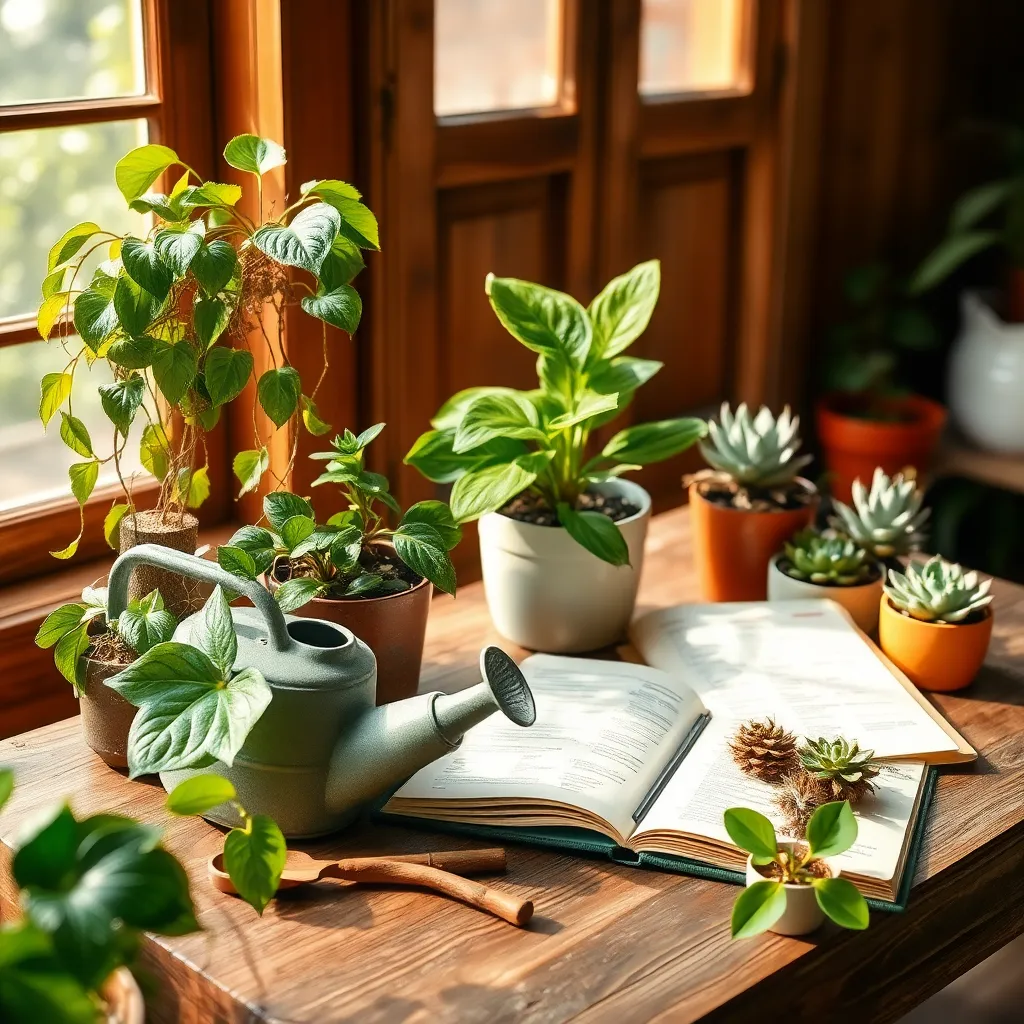
Caring for your indoor plants doesn’t have to be complicated, and establishing a simple maintenance routine is key. One of the first steps is understanding your plants’ specific watering needs, which can vary significantly depending on the species and their environment.
For most indoor plants, it’s best to check the moisture level of the soil before watering. Insert your finger about an inch deep into the soil; if it feels dry, it’s time to water. Remember to use a pot with drainage holes to prevent water from pooling at the bottom, which can lead to root rot.
In addition to watering, regularly cleaning your plants’ leaves is essential to keep them healthy. Dust can accumulate on leaves, blocking sunlight and hindering photosynthesis, so gently wipe them with a damp cloth every few weeks.
Fertilizing your plants is another important task but should be done sparingly. Use a balanced, water-soluble fertilizer every 4-6 weeks during the growing season, usually spring and summer, to provide essential nutrients.
Pruning helps maintain the shape of your plants and encourages new growth. Remove any dead or yellowing leaves with clean scissors to keep your plant looking vibrant and healthy.
For those eager to dive deeper, consider monitoring humidity levels in your home, as many tropical plants thrive in higher humidity. Using a pebble tray or a humidifier can help maintain the right environment, especially during dry winter months.
Finally, pay attention to the light conditions in your home and adjust as necessary. If your plant isn’t thriving, try moving it to a different location that better suits its light requirements, whether it prefers bright, indirect light or a shadier spot.
Troubleshooting Common Plant Issues
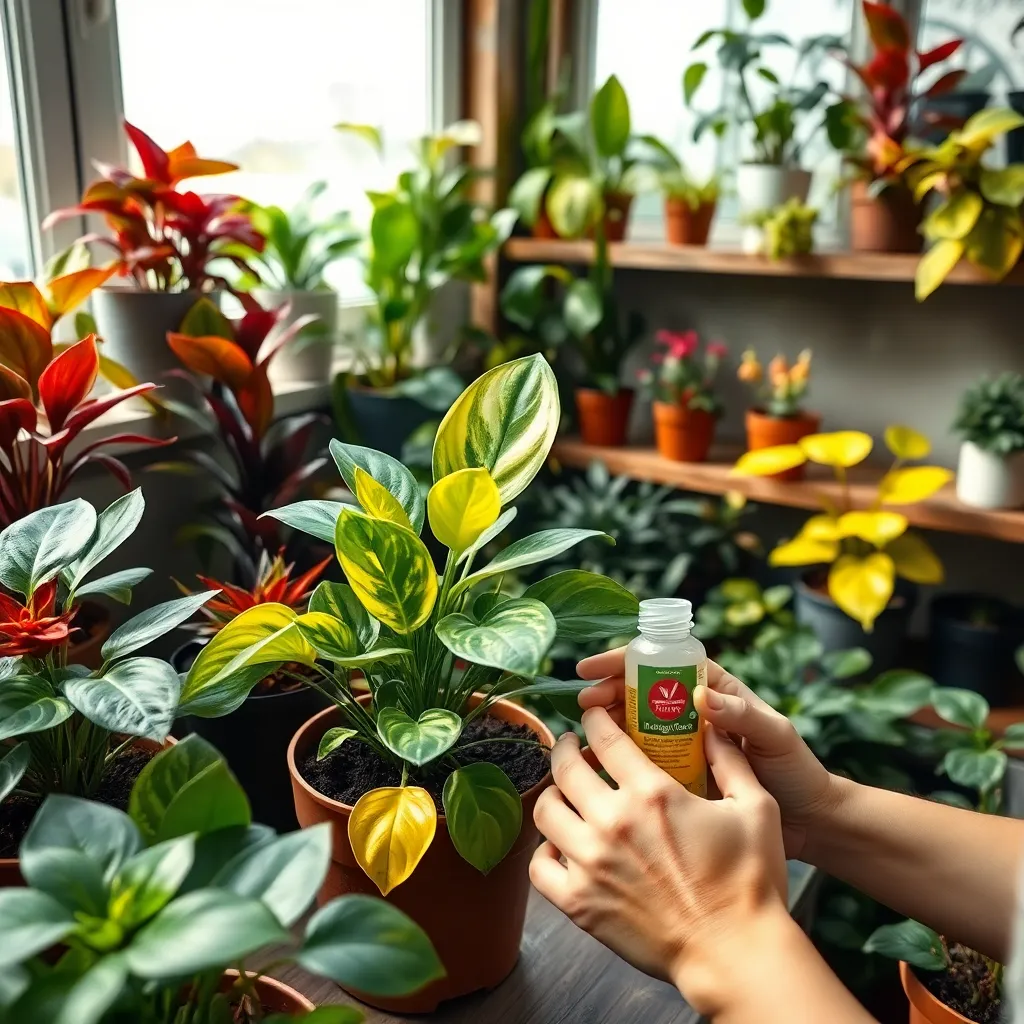
When indoor plants show signs of distress, it’s often due to improper watering. Overwatering is a common issue—ensure pots have drainage holes to prevent water from sitting around the roots.
Yellowing leaves can be a sign of either overwatering or underwatering. To judge the correct watering needs, check the top inch of soil; if it’s dry, it’s time to water.
Inconsistent light levels can cause plants to become leggy or lose color. Position plants near windows that provide indirect sunlight, and rotate them regularly to encourage even growth.
Pest infestations like aphids or spider mites can also stress indoor plants. Regularly inspect your plants and wipe leaves with a damp cloth to remove dust and pests.
Using the right soil type is crucial for healthy plants. For most indoor plants, a well-draining potting mix is ideal, which you may enhance with perlite or sand for better aeration.
Fertilizer is another important factor in plant health, but over-fertilizing can do more harm than good. Use a balanced, water-soluble fertilizer every month during the growing season, and reduce feeding during the winter.
Temperature fluctuations can also affect plant health, particularly drafts from windows or heating vents. Keep plants in a stable environment with consistent temperatures, ideally between 65°F and 75°F.
Expanding Your Plant Collection
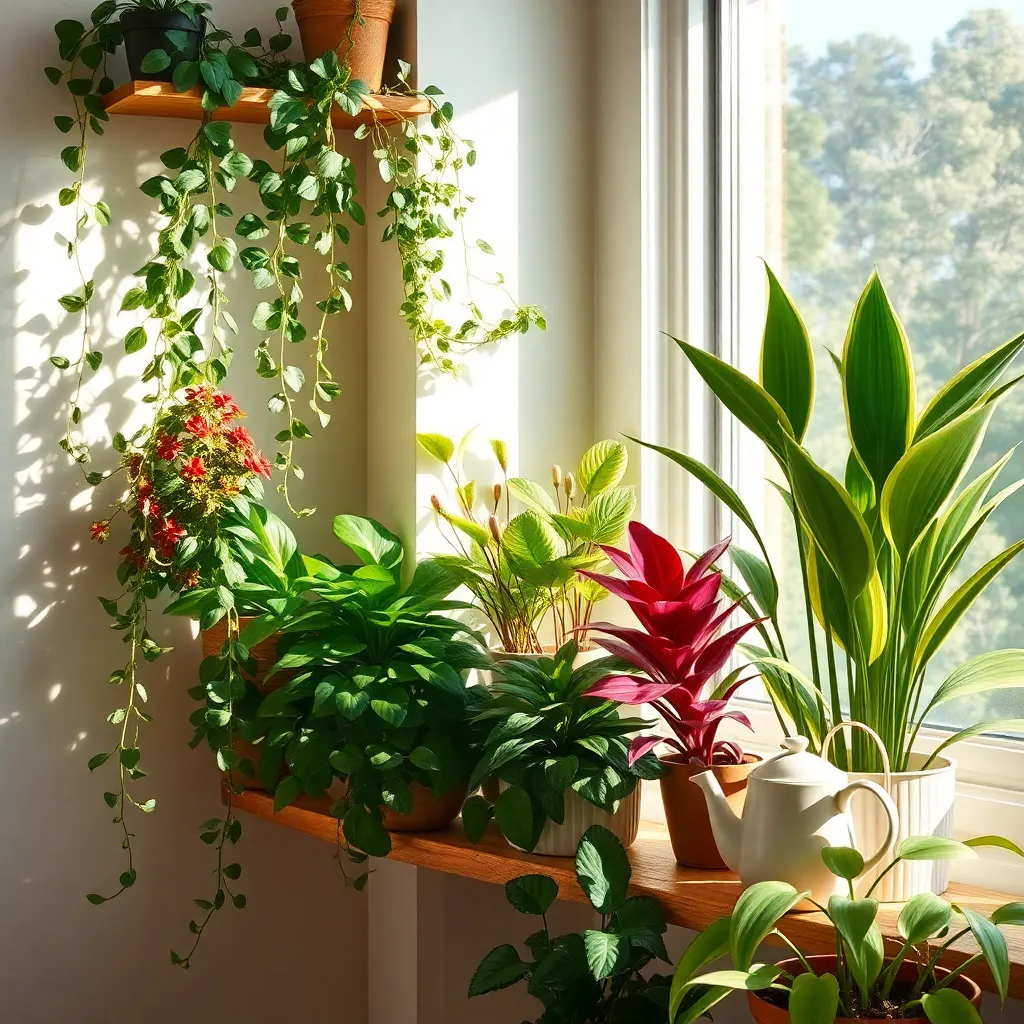
Once you’ve mastered caring for a few colorful indoor plants, consider expanding your collection to include a diverse range of species. This not only enhances the aesthetic appeal of your space but also provides an opportunity to learn about different plant care techniques.
Begin by researching plants that thrive in similar conditions to those you already own, which makes the transition easier. For instance, if your home has bright indirect light, consider adding a Zebra Plant or Chinese Evergreen to your collection.
Understanding the specific needs of each plant is crucial for successful growth. Make sure to note the differences in watering schedules; some plants require frequent watering while others prefer to dry out between waterings.
Repotting is another essential skill when expanding your collection, as it ensures your plants have enough room to grow. Choose a potting mix that suits the plant’s needs, such as a well-draining soil for succulents or a moisture-retaining mix for tropical species.
For those ready to take on a bit more challenge, try propagating your existing plants to create new ones. This can be done through stem cuttings, division, or leaf propagation, depending on the plant type, offering a budget-friendly way to grow your collection.
Conclusion: Growing Success with These Plants
In exploring the vibrant world of indoor plants, we’ve uncovered 12 key insights that mirror the nurturing aspects of successful relationships: patience, growth, understanding, adaptability, communication, support, resilience, shared space, balance, appreciation, commitment, and renewal. Just as each plant thrives under specific conditions, our relationships flourish when we attentively cater to their unique needs.
Now, take a moment to reflect on which of these concepts resonates most with your current relationship dynamics. As an actionable next step, choose one concept to focus on this week—whether it’s improving communication or fostering patience—and observe the changes it brings.
To keep these valuable insights at your fingertips, bookmark this article. It’s a handy guide you’ll want to revisit as your relationships continue to grow and evolve. By nurturing these connections with intention and care, you’ll be paving the path to a more fulfilling and resilient partnership.
Remember, successful relationships, like thriving plants, are a testament to the love and effort invested in them. Keep cultivating, and watch as your bonds blossom beautifully over time.







